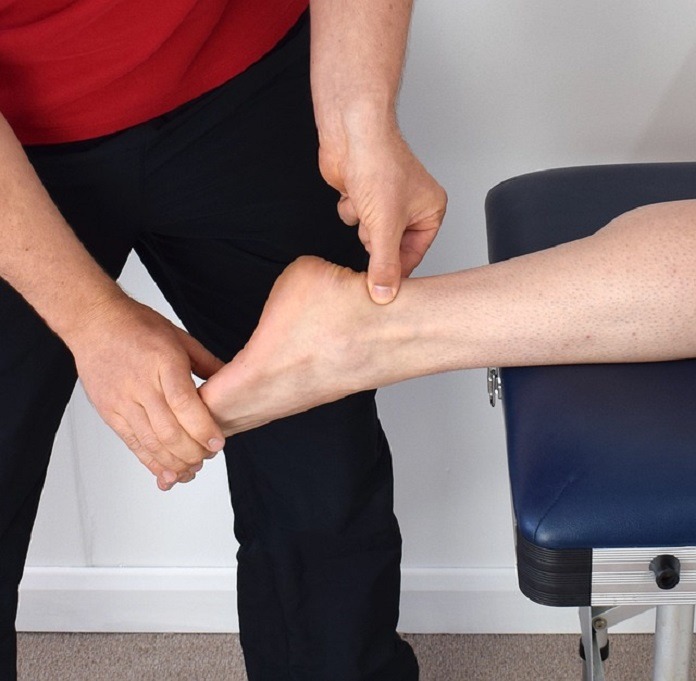The Achilles tendon is one of the biggest and strongest tendons in the body and it can tolerate many natural movements produced by humans. Although the Achilles tendon is strong, its injury still accounts for almost half of all sport injuries athletes face today.2
A large number of patients suffering from Achilles tendonitis tend to be either younger and or male.4 Achilles tendon injuries are referred to by many names such as tendinitis, tendinopathy, and tendon rupture.3
Achilles tendonitis is one of the most common injuries that occurs due to the overuse of the tendon. Usually, people with injured Achilles tendons feel disabled due to the consistent pain and discomfort.1
This injury commonly occurs in people who live a sedentary lifestyle and they suddenly engage in intense physical activity that puts extra pressure on the Achilles tendon causing it to rupture.1
The physical activities that often cause Achilles tendon injuries include running and jumping. The tendon can either fully rupture or partially rupture.2
Patients experiencing Achilles tendon injuries are able to recover fully. Some patients do not respond to treatment or receive treatment too late which forces them to undergo surgery.2
Symptoms and Diagnosis
An Achilles tendon rupture occurs abruptly in many patients. Patients do not feel symptoms or encounter signs before a rupture.2
To diagnose a ruptured Achilles tendon, patients are recommended to get an ultrasound or a magnetic resonance imaging examination.2 Measuring the palpable gap and completing a Thompson test can also be used to diagnose Achilles tendonitis.5
Tendinopathy is a common diagnosis of Achilles tendon injuries. Symptoms that accompany tendinopathies include swelling, pain, and the inability to repeatedly use the tendon.2
Other common symptoms of a ruptured Achilles tendon are edematous and tender palpations. Some people have also described hearing a snap when experiencing a ruptured Achilles tendon.2
Causes
People who suddenly participate in high-intensity exercises are likely to injure the tendons in their bodies because these tendons cannot adapt to the excess stress. The Achilles tendon is just as likely to be injured or ruptured as other tendons in the body.1
A majority of Achilles tendonitis cases occur spontaneously during a high impact sport.2
Some patients were monitored before developing Achilles tendon injuries. These patients reported experiencing hypoxia and mucoid degeneration within the collagen in their tendons.2
A small percentage of Achilles tendon injuries can also be caused by systemic diseases such as rheumatoid arthritis.2
Risk Factors
Some risk factors for developing an injured Achilles tendon include a difference in leg length, weak muscles, imbalanced muscles, inflexibility, and being overweight.2
Other intrinsic risk factors include predisposing diseases or blood supply such as hypoxia and hyperthermia which are caused by our own physiology or genetics.4
Extrinsic risk factors that arise as a result of our environment include drugs such as antibiotics, steroids, or narcotics. Training, movement and environment are all extrinsic factors that can affect whether or not a person will develop an Achilles tendon injury.4
The way the feet and ankle rotate and are placed during high intensity workouts such as running is also an important factor as to understanding risk factors and prevention of Achilles tendonitis.3
Treatment
Most people tend to heal the ruptured tendon non-surgically due to the risks that are associated with surgery. The risks include infection, drainage of sinuses, necrosis of skin or tendon, and nerve damage.5,2
Before any kind of rehabilitation, patients must immobilize and rest the tendon for up to eight weeks following the rupture or tear of the tendon. After eight weeks of immobilization, the patient and doctor must choose an appropriate path to rehabilitation which can be surgical or non-surgical.5
Moderate symptoms of a ruptured Achilles tendon will need to be treated by resting the ankle and allowing the tendon to heal. Non-steroidal anti-inflammatory drugs can be used to relieve the pain and swelling of Achilles tendonitis.2
Another method to heal an Achilles tendon rupture is to immobilize the affected area by using a plaster cast for up to eight weeks. The process of healing can be sped up by taking the cast off early and replacing it with a brace and participating in physiotherapy sessions.2
Chronic Achilles tendonitis be treated non-surgically by a combination of stretching and muscle training. Calf muscle training has shown improvement in the prevention and treatment of Achilles tendonitis.3
Corticosteroid injections are administered by doctors when chronic and painful swelling around the tendon is present.2
Surgical treatment of Achilles tendonitis includes removing the peri-tendinous adhesions and stopping tendon degeneration. Peritendinous repair surgery consists of six incisions on the tendon to suture the tendon rupture.2
In one study, more than 80% of people who had surgery to treat Achilles tendonitis recovered fully.2 The rate of re-ruptures occurring in the Achilles tendon is less common in patients who were treated surgically than non-surgically.5
Further research is required to conclude whether a patient’s Achilles tendonitis will heal quicker through surgery or non-surgical options.
This article does not provide medical advice. Please consult your doctor if you have an injured Achilles tendon.
References:
1. Wren TAL, Yerby SA, Beaupré GS, Carter DR. Mechanical properties of the human achilles tendon. Clinical Biomechanics. 2001;16(3):245-251. doi:10.1016/s0268-0033(00)00089-9
2. Järvinen TAH, Kannus P, Paavola M, Järvinen TL, Józsa L, Järvinen M. Achilles tendon injuries. Current Opinion in Rheumatology. 2001;13(2):150-155. doi:10.1097/00002281-200103000-00009
3. Fahlstr�m M, Jonsson P, Lorentzon R, Alfredson H. Chronic Achilles tendon pain treated with ECCENTRIC Calf-muscle training. Knee Surgery, Sports Traumatology, Arthroscopy. 2003;11(5):327-333. doi:10.1007/s00167-003-0418-z
4. Järvinen TAH, Kannus P, Maffulli N, Khan KM. Achilles tendon Disorders: Etiology and epidemiology. Foot and Ankle Clinics. 2005;10(2):255-266. doi:10.1016/j.fcl.2005.01.013
5. Soroceanu A, Sidhwa F, Aarabi S, Kaufman A, Glazebrook M. Surgical versus nonsurgical treatment of acute achilles tendon rupture. Journal of Bone and Joint Surgery. 2012;94(23):2136-2143. doi:10.2106/jbjs.k.00917
Image by mrdjrlawrence from Pixabay



